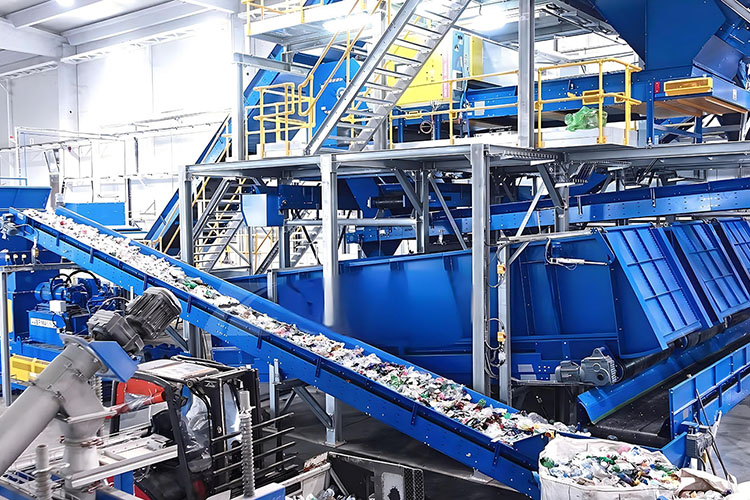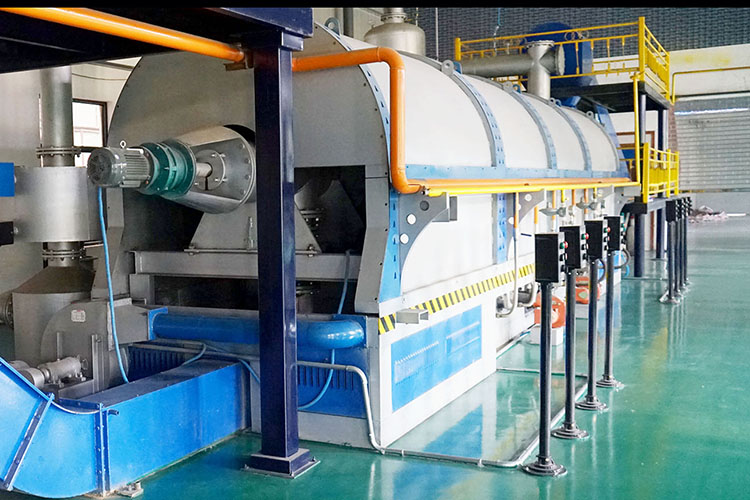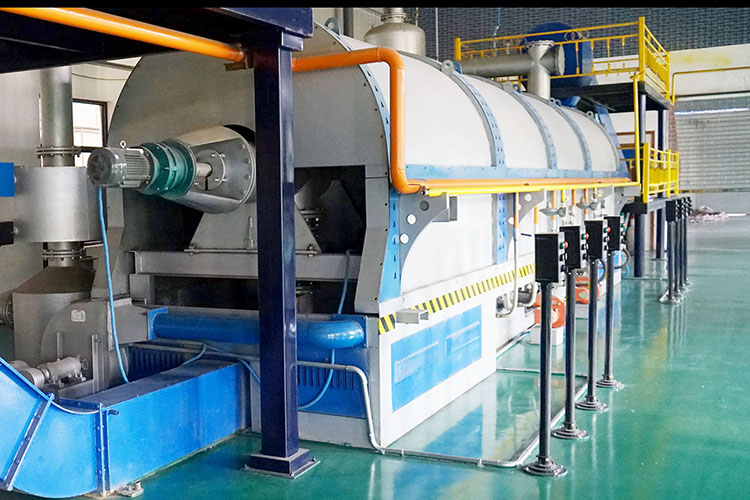The treatment of organic solid waste is an urgent issue that needs to be addressed in the sustainable development of modern cities and agriculture. With the increase of population and the improvement of living standards, the production of organic solid waste such as kitchen waste, agricultural waste, and kitchen waste is increasing day by day. These wastes not only occupy a large amount of landfill space, but also decompose into foul smelling gases in the natural environment, polluting water sources and the atmosphere. Therefore, the rational and effective treatment of organic solid waste has become an important issue in current environmental protection. In this context, organic solid waste treatment equipment has gradually become a key tool to solve this problem. They use advanced technological means to reduce, harmless, and resourceful organic waste, ultimately achieving the goal of protecting the environment and recycling resources.
Organic solid waste treatment equipment usually includes multiple stages such as crushing equipment, sorting equipment, fermentation system, dehydration equipment, anaerobic digestion system, composting equipment, odor treatment system, and wastewater treatment equipment. These devices each undertake different functions and cooperate with each other to complete the entire process of organic waste treatment.

Firstly, the crushing equipment is the first link in the entire processing flow. Due to the wide variety and varying shapes and sizes of organic solid waste, direct treatment can be very difficult, thus requiring preliminary crushing treatment. Crushing equipment reduces the volume of larger organic solid waste by cutting and shredding it into smaller particles or flakes. This not only facilitates the subsequent processing steps, but also improves processing efficiency. Modern crushing equipment usually has high efficiency and strong corrosion resistance, can handle various types of organic substances, and has strong adaptability.
Secondly, the sorting equipment is the second step in the processing chain for the crushed solid waste. In practical processing, many organic solid wastes are mixed with inorganic substances such as plastics, glass, and metals. If these impurities are not separated, they will affect the subsequent fermentation and composting processes. Therefore, the function of sorting equipment is to classify recyclable, organic, and inorganic substances in solid waste. Through efficient automated sorting, the efficiency of resource recovery can be greatly improved while reducing the impact of inorganic substances on the entire processing process.

The fermentation system is one of the most critical processes in the treatment of organic solid waste. Fermentation systems utilize the activity of microorganisms under aerobic or anaerobic conditions to convert organic matter into compost or energy (such as biogas). In aerobic fermentation, microorganisms generate heat by decomposing organic matter, quickly converting organic waste into humus for the production of organic fertilizers. In anaerobic fermentation, waste is decomposed in an anaerobic environment to produce biogas (mainly composed of methane), which is a renewable energy source that can be used for power generation or heating. Anaerobic fermentation systems have the characteristics of high airtightness and good environmental friendliness, which can effectively collect and utilize biogas while avoiding the emission of odorous gases.
In addition to fermentation, dehydration equipment also plays an important role in the processing. Due to the high moisture content of organic solid waste, direct fermentation or composting can prolong treatment time and affect efficiency. Therefore, dehydration equipment can treat solid waste with high humidity and reduce its moisture content. This not only reduces the load on subsequent processing equipment, but also effectively lowers transportation costs. Through dehydration treatment, the volume and weight of garbage are significantly reduced, and the processing efficiency is greatly improved.
Anaerobic digestion system is another important technology in organic solid waste treatment. It converts organic matter into biogas and residual solid substances by utilizing specific microorganisms under anaerobic conditions. The generated biogas can be used for power generation, heating, or as fuel, with the function of energy recovery. And the remaining solid material can be used to produce organic fertilizers. Anaerobic digestion has the characteristics of high efficiency and environmental protection, and has been widely used in the treatment of large-scale kitchen waste and agricultural and pastoral waste.
Composting equipment is the main tool for converting organic waste into organic fertilizers. Through the closed fermentation system of composting equipment, waste is rapidly decomposed into stable organic matter under controlled temperature, humidity, and ventilation conditions, forming organic fertilizer. These organic fertilizers can be directly used in agriculture to improve soil fertility and achieve the resource utilization of organic solid waste.
The generation of odorous gases is an issue that cannot be ignored during the treatment process, therefore the odor treatment system is crucial. Modern organic solid waste treatment equipment is usually equipped with efficient odor treatment systems, and commonly used methods include biofilters, activated carbon adsorption, etc. Through these technologies, the odor generated during the treatment process can be effectively removed, meeting environmental emission standards and avoiding any impact on the surrounding environment.

Finally, wastewater treatment equipment cannot be ignored. Organic solid waste will generate a certain amount of high COD (chemical oxygen demand) wastewater during the treatment process. If not treated and discharged, it may cause serious pollution to the water body. Therefore, wastewater treatment equipment ensures that wastewater can meet discharge standards and even be reused through multi-stage sedimentation, filtration, and biological treatment, further reducing environmental burden.
Overall, organic solid waste treatment equipment can achieve comprehensive treatment of various organic wastes through the combination of multiple functional modules.
Yongle Environmental Protection is mainly engaged in the research and development, production and sales of complete sets of technical equipment for organic solid waste disposal and comprehensive utilization. Production and manufacturing, domestic waste treatment equipment, tire pyrolysis equipment, medical waste disposal equipment, hazardous waste disposal equipment, and achieve efficient and comprehensive utilization of resources through independently developed low-temperature anaerobic pyrolysis equipment technology solutions.
Tags:Introduction to Organic Solid Waste Treatment Equipment,Solid Waste Treatment Equipment,YONGLE GROUP
 Latest news
Latest news


























